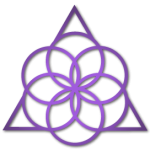From 2013 to now, the evolution of the Bowspring method has greatly refined in simplifying the alignment practice for any age or level of health. When we started Bowspring in 2013, Desi and I were practicing and teaching the advanced vinyasa flow of the Roots, which is a most radically difficult asana sequence! We didn’t dial-in the Bowspring template and algorithm until last year so the early practice of the Bowspring was way too difficult and generally uncomfortable for most students. Only a few diehard students, who started with us four years ago, have stayed the course! This year our Global Bowspring focus is to make our alignment method more accessible, effective and enjoyable for a much broader audience of students worldwide.
It has taken us 4 years of practicing and teaching the method to better understand how to make the Bowspring less triggering and less uncomfortable for new students! Week after week we progressively deconstructed the Bowspring into increasingly simpler, yet more precise forms for the most routine postures – sitting in a chair, standing, and walking. We continue to simplify the alignment method to make it more doable for anyone. This year all our trainings on our global Bowspring tour will begin with the ABC’s of the Elemental forms and the 10 key areas of the mind-body.
We have learned (the hard way) that the Bowspring is best received by new students when there is emphasis on deep breathing using less effort with soft sensitivity. We are now having much better success introducing the Bowspring when we start with positions that are Yin in nature (with Radiant Heart) that give a sense of liquid relaxation. A key focus of the new Elemental classes is slow, deep breathing in positions in which students can initially open more easily and more fully with less effort. By introducing breath in positions like Recovery pose standing or Assimilation pose laying down, some of the superficial stress can be released so the Bowspring form can be experienced with less resistance from the subconscious mind, i.e. nervous system.
To better reach the mainstream, especially in America, we are now introducing the Bowspring through a standardized Curriculum
We have also added “Bowstorative” classes (restorative class with props using Radiant Heart throughout coupled with breathwork) to our curriculum. In these classes, any age of student can learn to breathe deeply and to gently move and open into the Bowspring with less effort. By focusing on first releasing some of their daily default level of tension and stress, the new student is better able to open into the Bowspring form without so much inner, mental resistance. This softer, slower presentation of the Bowspring offers new students an enjoyable and therapeutic first experience to the method. Since the beginning of this tour year, we have been positively affirmed in the simpler presentation of the method. The feedback from our growing global community is clearly reflecting an increase in benefits from a simpler, less forceful practice. Happily, the Bowspring global community is on the rise.

